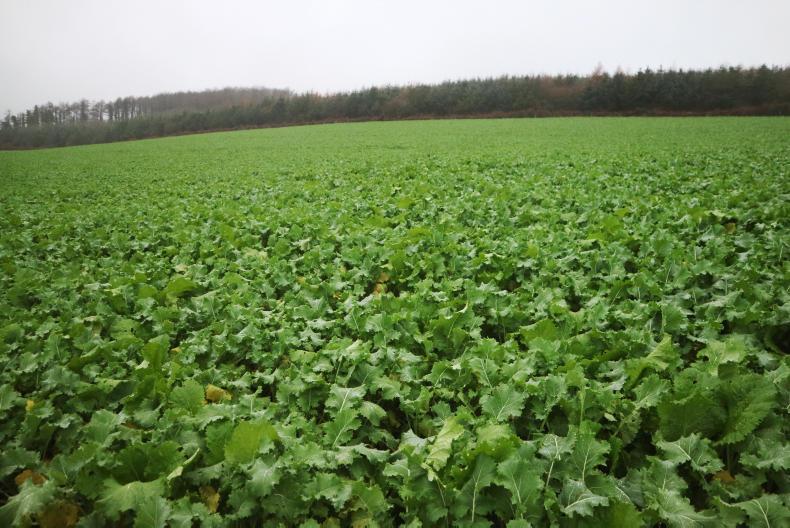With winter feed being an issue and the viability of wholecrop being questioned due to its expense, some farmers who are short on forage are caught in limbo.
As discussed in this week’s management notes, the time for wholecrop winter wheat is passing quickly.
With the quality of spring wheat and barley crops varying, wholecrop silage will be in limited supply.
The other option is growing a forage catch crop in early cut stubble fields. There is a belief that an opportunity exists for tillage and livestock farmers to benefit from contract-growing forage catch crops to bulk feed stocks.
Farmers can early cut stubble fields from winter barely crops, as mentioned by Andy Doyle in this week's management notes.
If planted now, the temperature will allow for good germination once rain comes.
A first cut can be expected to be taken off such crops in October, according to Liam Leahy, tillage adviser at Dairygold. They must be fertilised and managed well before the first cut.
Following this they should be left to grow over winter. The potential for a second cut in February will further help to stretch fodder stocks.
No fertiliser would be needed over winter, as uptake and growth would not justify the cost. Natural nitrogen would carry the crop through.
Once the second cut is taken off in mid-February, the field can be planted with a spring crop.
“It is important that the catch crop does not head out, because if it enters the reproductive phase it will become a weed next year," said Liam.
The crop would also need to be burned off with Roundup.
Oats are also an option, however it would be very costly.
“There is a huge opportunity there for tillage and livestock farmers to work together, it would put the shoulder to the wheel in a sense and it really is a win-win situation if done correctly," said Liam.
Various current and winter feed options are discussed in this week’s Focus by the Irish Farmers Journal livestock team.
Read more
Making milk from maize in sunny Spain
No low-cost loans in 2018
With winter feed being an issue and the viability of wholecrop being questioned due to its expense, some farmers who are short on forage are caught in limbo.
As discussed in this week’s management notes, the time for wholecrop winter wheat is passing quickly.
With the quality of spring wheat and barley crops varying, wholecrop silage will be in limited supply.
The other option is growing a forage catch crop in early cut stubble fields. There is a belief that an opportunity exists for tillage and livestock farmers to benefit from contract-growing forage catch crops to bulk feed stocks.
Farmers can early cut stubble fields from winter barely crops, as mentioned by Andy Doyle in this week's management notes.
If planted now, the temperature will allow for good germination once rain comes.
A first cut can be expected to be taken off such crops in October, according to Liam Leahy, tillage adviser at Dairygold. They must be fertilised and managed well before the first cut.
Following this they should be left to grow over winter. The potential for a second cut in February will further help to stretch fodder stocks.
No fertiliser would be needed over winter, as uptake and growth would not justify the cost. Natural nitrogen would carry the crop through.
Once the second cut is taken off in mid-February, the field can be planted with a spring crop.
“It is important that the catch crop does not head out, because if it enters the reproductive phase it will become a weed next year," said Liam.
The crop would also need to be burned off with Roundup.
Oats are also an option, however it would be very costly.
“There is a huge opportunity there for tillage and livestock farmers to work together, it would put the shoulder to the wheel in a sense and it really is a win-win situation if done correctly," said Liam.
Various current and winter feed options are discussed in this week’s Focus by the Irish Farmers Journal livestock team.
Read more
Making milk from maize in sunny Spain
No low-cost loans in 2018






 This is a subscriber-only article
This is a subscriber-only article










SHARING OPTIONS: